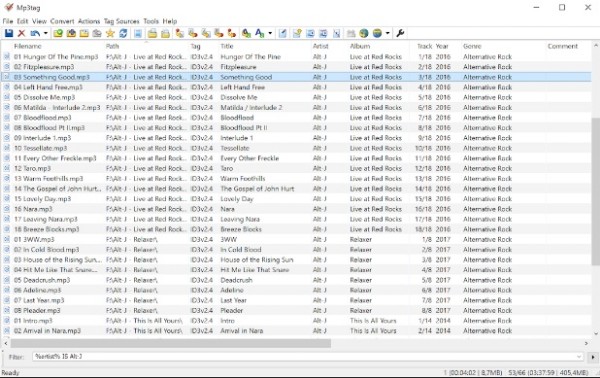
- #Mp3 tag editor online how to#
- #Mp3 tag editor online software#
- #Mp3 tag editor online download#
- #Mp3 tag editor online free#
Once you’ve add the mp3 file, online automatic mp3 tag editor will add the relevant metadata from the internet, after which, you’ll have to check all the information and make necessary changes. Step 3 Preview the Metadata and Make Required Changes

As already mentioned, you can also select the “Enter URL” option to paste the URL of an audio file stored on any online database. You can either click the “Choose Files” button to select your desired files from computer or simply drag and drop the files on the website. Then, you have to upload the audio files that you want to edit with.

#Mp3 tag editor online how to#
How to Edit MP3 Tags Online with Tagmp3.Net Step 1 Open Tagmp3.Net on Your Web Browserįirst of all, open web browser on your computer and go to Tagmp3.Net online editing tool.
#Mp3 tag editor online software#
This online software automatically updates ID3 version of the mp3 files to ID3v2 and helps you edit lots of metadata information such as title, album, genre, album art, release year, comments, and many more. Tagmp3.Net can be accessed from any type of device and without the need of installing any third-party software or plugin. It is very easy to use online automatic mp3 tag editor that is compatible with both versions of ID3 i.e.
#Mp3 tag editor online free#
is a free online service that let you easily add or modify the metadata information of your audio files. You can read this article and learn how to edit mp3 tags online with the help of best ID3 tag editors. There are many mp3 tagger online tools available, and if you have no idea which one to choose, we’re here to solve this problem for you. And we all know a poorly tagged mp3 collection makes everything from organization to playback very difficult.

#Mp3 tag editor online download#
This information is displayed to users browsing the platform and helps with discoverability, allowing your music to reach a wider audience.Most of the time when you download music from online sources, it comes with wrong or no metadata information. Online Music Platforms: When you upload your MP3 files to online music platforms or streaming services, ID3 tags play a crucial role in providing information about the songs.These tags allow users to understand the details of the MP3 file without having to listen to it entirely. Accessibility and Screen Readers: Just like general metadata, ID3 tags can also benefit people with visual impairments or disabilities who use screen readers or specialized software to access and navigate audio content.It also helps prevent unauthorized use or distribution of copyrighted material. This is important for protecting intellectual property and ensuring proper attribution of the work to its creator. Copyright and Attribution: ID3 tags can include copyright information and the name of the copyright holder.This means that whether you transfer your MP3 files to another computer, share them with friends, or upload them to online music services, the metadata stays intact, and the audio files retain their proper identification. Consistency in Metadata: Standardized ID3 tags ensure that the same information is presented consistently across different devices and platforms.This saves users time and effort in locating the music they want to listen to. Media players and music management software use these tags to create playlists, sort songs by various criteria, and build libraries based on genres or artists. Efficient Search and Sorting: With ID3 tags, users can search for specific songs, artists, or albums in their music library.This enriched user experience adds context to the audio and makes it more enjoyable for listeners. This includes showing the song title, artist, and album cover while the song is playing. Enhanced User Experience: When playing MP3 files in media players or music apps, ID3 tags are used to display relevant information to the user.Without ID3 tags, audio files would appear as generic filenames, making it difficult to distinguish one track from another. This information helps users and media players to easily identify and organize their music collection.



 0 kommentar(er)
0 kommentar(er)
